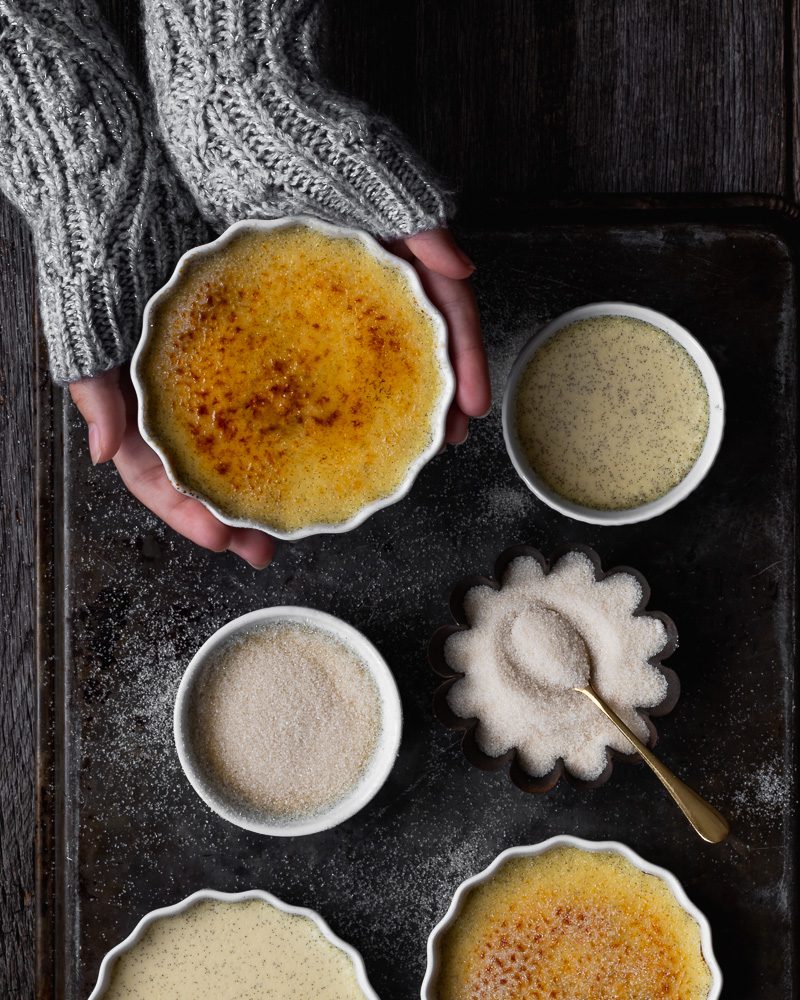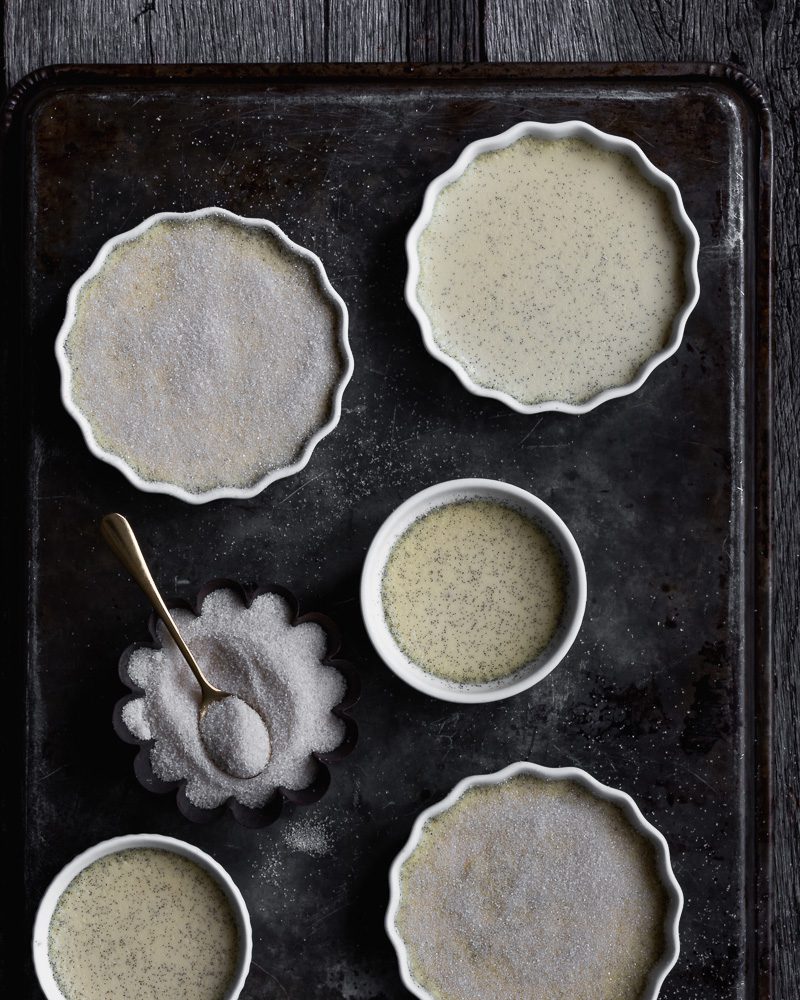Cook on a Whim: Classic Crème Brûlée
By • October 10, 2019 0 873

In honor of The Georgetowner’s 65th birthday, I thought I’d share what I feel is the ultimate celebratory, sophisticated dessert. Crème brûlée is one of those desserts that everyone loves but I don’t think many are making at home.
The funny thing is, most people think it’s terribly complicated and fancy to make. This is sneaky, sexy French simplicity at its finest — four simple ingredients composed in a way that mystifies people while simultaneously knocking their socks off. It makes people wonder why it’s served in such tiny vessels as they desperately scrape the final bits out with their spoon and look around wondering if anyone will notice them licking their ramekin.
Give my tried-and-true recipe a try and make this for someone you love.
Classic Crème Brûlée
Special equipment
6 4-ounce ramekins (although I have made this in small coffee mugs and very small mason jars before … when the urge for crème brûlée strikes, nothing can stop me)
Small kitchen torch
Ingredients
1 vanilla bean split lengthwise, or 2 tablespoons pure vanilla extract
2 cups heavy cream
4 egg yolks
1/4 cup granulated sugar
Pinch of salt
For the crunchy top:
A few tablespoons granulated sugar

Photo by Anita Parris Soule. Courtesy Cook on a Whim.
Instructions
Heat oven to 325 degrees and boil a tea kettle or a small saucepan of water.
Place the ramekins in a baking dish large enough to hold them comfortably and set aside.
Add the heavy cream and split vanilla bean (or extract) to a small saucepan over medium-high heat. You want the cream to get hot, but not boil, so keep an eye on it. And if you see bubbles around the edge, turn off the heat.
While waiting for the cream to heat, whisk the yolks, sugar and a pinch of salt in a large mixing bowl until the mixture thickens and becomes pale yellow. When you lift your whisk, a long ribbon should fall. (You can use a mixer, but I always feel like a very fancy French pastry chef when I do it by hand. Plus, it really isn’t worth dirtying a mixer.)
When both your cream mixture and yolk mixtures are ready, slowly add the cream mixture to the yolks while whisking.
Just as a curdle precaution, I then pour this mixture through a fine mesh sieve set over a large measuring cup (the measuring cup helps with the pouring process).
Next, divide the mixture evenly between the ramekins. Place your baking dish in the oven, and very carefully add the recently boiled water to the pan, making sure not to get any in the ramekins. Loosely cover the entire dish with foil and bake for 30 to 40 minutes. When you gently shake the ramekins, they will be very loose and wiggly still, but set. They will firm up after refrigeration.
Remove the ramekins from the water bath and let cool to room temp, or if you’re impatient like me, just stick them in the fridge as soon as they come out. Let chill for 3 to 4 hours (at this point you can let them sit in the fridge covered for three days before moving on to the next step).
Five to 10 minutes before serving, sprinkle each ramekin with a light dusting of sugar. I like a very delicate layer of crispy sugar, but if you like it thicker, just add more sugar. Holding your kitchen torch close to the surface of the crème brûlée, move slowly and constantly back and forth until the sugar bubbles and turns a caramel color. The sugar will harden within seconds.

